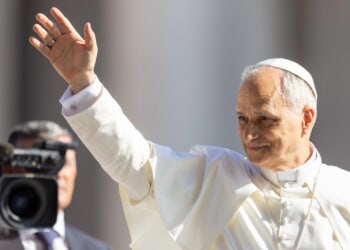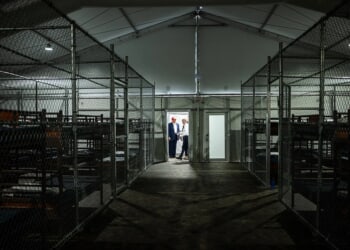Op-ed views and opinions expressed are solely those of the author.
Poverty in Iran had become so widespread that on May 17, 2021, Feryal Mostofi, head of the Money and Capital Committee at the Tehran Chamber of Commerce, warned of the middle class collapsing and merging into the growing poor population. She noted that poverty was rapidly rising, and the middle class was gradually disappearing.
Mostofi stated, “We are witnessing a sharp increase in poverty across the society, and the middle class is steadily sinking into hardship. Some reports suggest that out of Iran’s 80 million people, around 60 million live below the poverty line.”
And since 2021, with inflation exceeding 40%, the middle class has been steadily and completely absorbed into the impoverished population. Today, even media outlets close to the regime admit that at least 80% of the population lives below the absolute poverty line.
The Tehran Chamber of Commerce has reported a persistent decline in new investments over the past decade. At the same time, large-scale capital flight has been reported, signaling deep economic instability and widespread impoverishment.
Capital Flight
According to the Tehran Chamber of Commerce and Central Bank data, between 2011 and 2019, approximately $98.4 billion in capital left Iran, averaging $10.9 billion per year. These figures reflect only official data and exclude unregistered flows (Donya-e-Eqtesad, August 23, 2020).
Saeed Leylaz, a regime-aligned economist, estimated that over $100 billion in capital left the country between 2014 and 2019. This estimate does not include hidden assets such as gold, foreign currency, or U.S. dollars stashed away by ordinary citizens. The Chamber emphasizes that a lack of public trust in the future has discouraged long-term investment. According to a basic economic principle, capital gravitates toward stable and secure environments.
Reports indicate that Iranians have invested up to $70 billion in Turkish real estate, helping revive a market that was on the brink of collapse. This exodus of capital is driven by deep insecurity and a lack of hope in Iran’s future. A report published on February 21, 2018, by the real estate platform Tranio noted that the 2017 anti-government protests—triggered by clerical rule, widespread corruption, and economic crisis—accelerated capital outflows from Iran.
Roghani Zanjani, former head of Iran’s Planning and Budget Organization, described Iran’s dual-budget system in a YouTube video published on November 22, 2024.
“Our financial system has two treasuries: one for the government and one for the Supreme Leader. No other country has such a system,” Zanjani said. “The Supreme Leader’s treasury includes oil and gas revenues, which are used to fund the so-called ‘Resistance Front,’ while the government treasury relies solely on taxes. This structure has created severe budget deficits, forcing the government either to extract more from the people or print money—causing inflation.”
To better understand the economic toll of Iran’s theocratic regime, compare its inflation rate with that of neighboring countries:
-
- Oman: 0.7%
- Bahrayn: 1.1%
- Qatar: 1.15%
- Saudia Arabia: 1.6%
- United Arab Emirates: 2.4%
This drastic disparity highlights Iran’s chronic economic and structural dysfunction.
Although official figures are unavailable, various reports suggest that following the war between Hamas and Israel in October 2023, capital flight from Iran has further intensified, driven by fears of political instability and potential regional spillover into Iranian territory.
The Catastrophic Scale of Brain Drain
As the middle class continues to shrink, an accelerating brain drain—primarily involving members of that same class—serves as a clear sign of deepening social instability and widespread despair.
Majid Abhari, an Iranian sociologist, told the state-affiliated Arman newspaper (June 2021): “In recent years, brain drain has inflicted 300 times more economic damage on Iran than the 1980-1988 Iran-Iraq War.”
For context, former president Akbar Hashemi Rafsanjani once estimated the economic cost of the Iran-Iraq War at nearly $1 trillion.
Abdolkhaleq, a senior expert with the World Bank, echoed this concern, stating: “The brain drains costs Iran more than double the country’s annual oil revenues.”
In an August 19 report, the state-run ILNA news agency wrote: “Iran is now recognized as the world’s largest exporter of young talent and intellectual elites.”
According to the International Monetary Fund, between 150,000 and 180,000 educated Iranians apply to emigrate each year (Alef News Agency, January 12, 2017).
Hossein Simayi-Sarraf, Minister of Science, told Asr-e Iran newspaper (November 22, 2024): “In recent years, about 25% of university faculty members have emigrated.”
On the same day, Arman newspaper reported: A 2017 World Bank estimate placed Iran’s annual brain drain cost at around $50 billion—more than twice the country’s oil export revenues. The emigration of each elite is estimated to cost Iran roughly $1 million.
According to The Economist, 96% of patents registered by Iranians between 2007 and 2012 were filed by expatriates of Iranian origin living abroad. According to a report by the Nilgam Center, a Tehran-based private agency that provides immigration services to Iranians, between 2010 and 2020, approximately 500,000 Iranians left the country annually.
In an August 23, 2025, article, the state-run Setareh Sobh newspaper wrote: “Millions of Iranians are eager to emigrate—regardless of the risks involved. The pressure of daily life is so intense that many are willing to risk their lives crossing mountains, deserts, and seas. Even without any certainty of survival, they still choose to leave.”
A Health System in Crisis: The Medical Brain Drain
The mass emigration of skilled professionals has placed enormous strain on Iran’s healthcare system. In some provinces, not a single heart surgeon remains.
According to a report by the state-affiliated Salamat News (September 12), the situation has grown dire:
“Brain drain has now reached the medical sector, with a large number of doctors and healthcare personnel emigrating. Over the past year, 160 cardiologists have left the country. In the same period, 30,000 medical professionals—graduates of Iran’s universities—have requested academic transcripts to apply for positions in Oman. In just the past four years, more than 16,000 general practitioners have left Iran.”
Given these clear facts, it seems that despite unprecedented repression, change in Iran is inevitable.
DONATE TO BIZPAC REVIEW
Please help us! If you are fed up with letting radical big tech execs, phony fact-checkers, tyrannical liberals and a lying mainstream media have unprecedented power over your news please consider making a donation to BPR to help us fight them. Now is the time. Truth has never been more critical!
Success! Thank you for donating. Please share BPR content to help combat the lies.
We have no tolerance for comments containing violence, racism, profanity, vulgarity, doxing, or discourteous behavior. Thank you for partnering with us to maintain fruitful conversation.









![Illegal Alien Walked Free After Decapitating Woman, Abusing Corpse for Weeks [WATCH]](https://www.right2024.com/wp-content/uploads/2025/07/1753013138_Illegal-Alien-Walked-Free-After-Decapitating-Woman-Abusing-Corpse-for-350x250.jpg)






